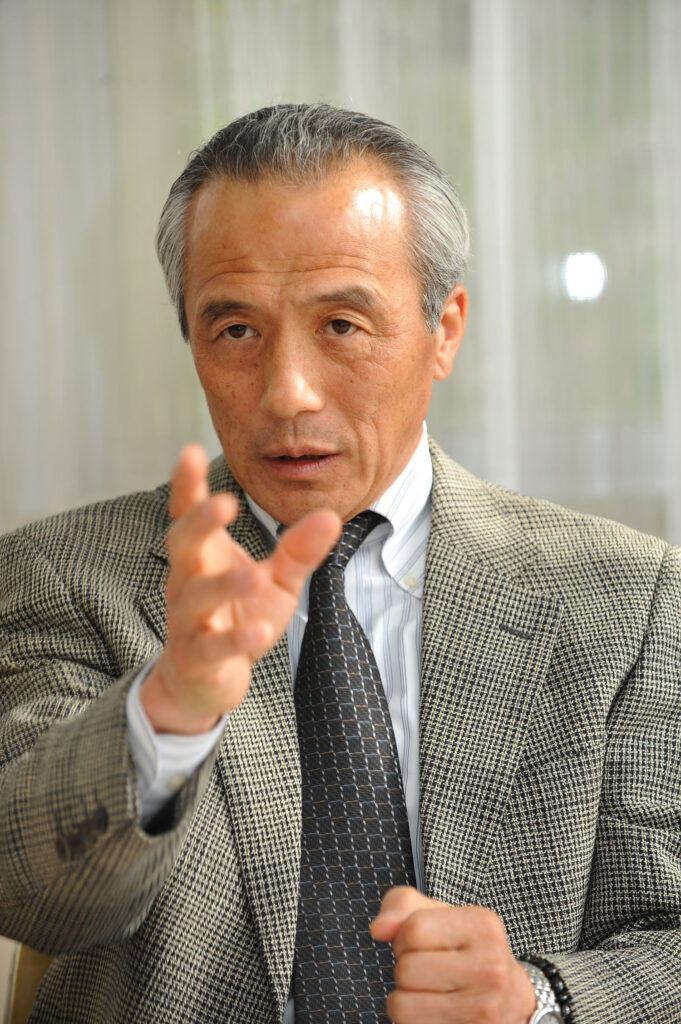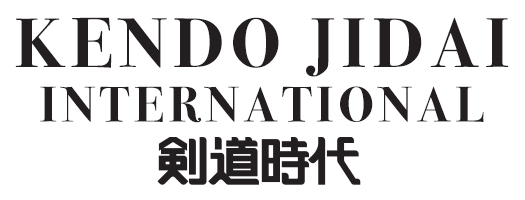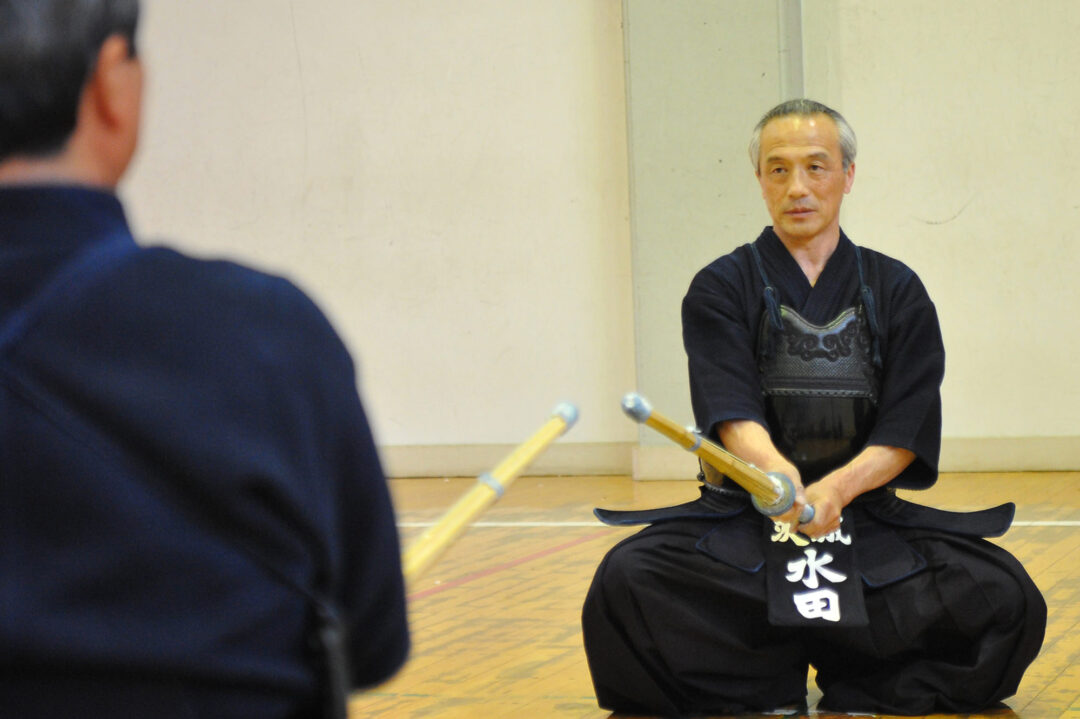Note: This article was first published in the June 2011 issue. The profile information presented here is based on Mizuta Sensei’s status at that time.
“‘It’s not that Seme with Tame is strong; rather, a strong Seme gives rise to Tame,’ says Mizuta Sensei. Tame is one of the major hurdles many Kendo practitioners face. Drawing from his own experience, Mizuta Sensei, who teaches students of all ages at his own Mizuta Dojo, explains his understanding of Tame and the training methods he uses in his Dojo to help cultivate it.”
Mizuta Shigenori

Born in 1951 in Saga Prefecture, graduated from Ryukoku High School and Chukyo University before beginning his career as a teacher in Ibaraki Prefecture. He distinguished himself in national-level competitions, including the All Japan Kendo Championship, the All Japan Teachers’ Championship, and the National Sports Festival. In 1998, he was promoted to 8th Dan. He currently leads the Mizuta Dojo and is devoted to training the next generation of Kendo practitioners.
Tame in Movement and Mind
What is Tame, and how can one develop a strike that embodies it?
It’s a difficult and complex theme, but I would like to share my personal understanding of Tame, shaped through many years of Kendo practice.
I believe there are two main types of Tame: one relates to the physical act of striking, and the other to the mental state behind it. A strike can only truly possess Tame when both aspects are working in unison.
So, what do I mean by Tame in the physical movement of a strike?
At my Dojo, I often explain it using this analogy:
“Imagine you’re trying to swat a fly with a fly swatter. How do you go about it? You can’t catch the fly by just swinging the swatter around wildly. Most people quietly watch and wait until the fly lands and settles then, in an instant, they strike. That moment of stillness and focused intent—that’s Tame. When you’re trying to understand Tame, try approaching it with that same mindset.”
It may not be a perfect metaphor, but I think it helps to paint a mental image.
On the other hand, when it comes to Tame as a mental state, I explain it like this:
“In Kendo, we speak of the Shikai, the four sicknesses: surprise (Kyo), fear (Ku), doubt (Gi), and confusion (Waku).
Practicing in a way that avoids falling into these traps is essential for any Kendoka. In fact, Shikai can also be seen as the very opportunities to strike. That means creating Shikai in your opponent is a key element in finding the moment to strike.
Think about it—if your opponent is simply attacking wildly without pause, do you really feel any of the Shikai? Probably not. But what if your opponent maintains sharp control of their Kensaki, and presses forward with such presence that you never know when they might strike? Isn’t that the kind of pressure that causes you to feel surprise, fear, doubt, or confusion?”
At my Dojo, we welcome students of all ages, from young children to adults. Because much of Kendo instruction can feel abstract or hard to grasp, I try to explain it in ways that are easy to visualize. By keeping both types of Tame in mind during practice, the physical and the mental, I believe one can gradually move closer to achieving a strike that truly contains Tame.
A Solid Lower Body is the Source of Tame
I began to consciously think about Tame around the time I was preparing for my 7th dan examination.
At the time, I was fortunate to have many Keiko opportunities with distinguished teachers such as One Ichiro Sensei (Hanshi 8th Dan) and Imai Saburo Sensei (Hanshi 8th Dan). They didn’t necessarily give me explicit instructions like, “This is what Tame is,” but through Keiko, I came to realize many important things.
From One Sensei, I learned particularly about the importance of properly drawing in the left foot. He often said,
“In Kendo, only when one technique is fully completed can the next one begin. To deliver a series of techniques, your left foot must follow through properly.”
Whenever I failed to bring my left foot forward and my body lagged behind, he would correct me strictly.
Today, I deeply understand the importance of that teaching. In the context of Tame, one could even say that the act of drawing in the left foot creates Tame.
Why? Because a stable lower body is absolutely essential for a strike that contains Tame.
There’s an expression in Japanese: Jōkyo Kajitsu, meaninglight in the upper body, firm in the lower body.
When tension builds up in the upper body, it leads to impatience and premature attacks.
You can’t expect a strike with Tame under such conditions.
Only when the lower body is grounded and your posture allows you to strike at any moment can strong Seme be applied—and it is within that strong pressure that Tame is born.
People often say things like, “Your strikes lack Tame.”
But in my opinion, a strike that lacks Tame is essentially a strike that lacks Seme.
Without Seme, the strike feels light—not in terms of physical strength, but in intent and presence.
I remember when I was practicing with Imai Sensei, sometimes before I even launched an attack, he would say things like,
“You got me,” or “That’s dangerous,” and break his Kamae.
At the time, I didn’t fully understand what he meant.
But looking back now, I believe he was guiding me toward discovering what it means to deliver a strike with Tame.
It’s not that Tame makes your Seme strong.
Rather, strong Seme gives rise to Tame.
This belief continues to shape how I approach my everyday Keiko.
Keiko Begins When You Enter the Dojo and Ends When You Leave
To develop strikes with Tame and strong Seme, it is essential to practice in a way that never breaks the connection with your opponent.
At Mizuta Dojo, we often say:
“Keiko begins the moment you enter the Dojo and ends only when you leave.”
This mindset means that from warm-ups to Suburi and basic drills, every part of training must be done with focused intent.
Through this constant tension and awareness, your posture naturally improves, and you become able to sustain uninterrupted Keiko one that maintains En (縁), the invisible connection between you and your opponent.
It’s a demanding way to train, both physically and mentally. But the shorter the moments when that connection is broken, the more pressure your opponent feels.
Ultimately, I believe this leads directly to stronger Seme.

By focusing your spirit from the very moment you bow to your opponent, you can maintain uninterrupted En throughout the Keiko.
Training Method for Developing Tame-Filled Strikes: Part 1
From Large and Correct to Sharp and Fast — Basic Keiko Using Suriashi
The rest of this article is only available for Kendo Jidai International subscribers!


